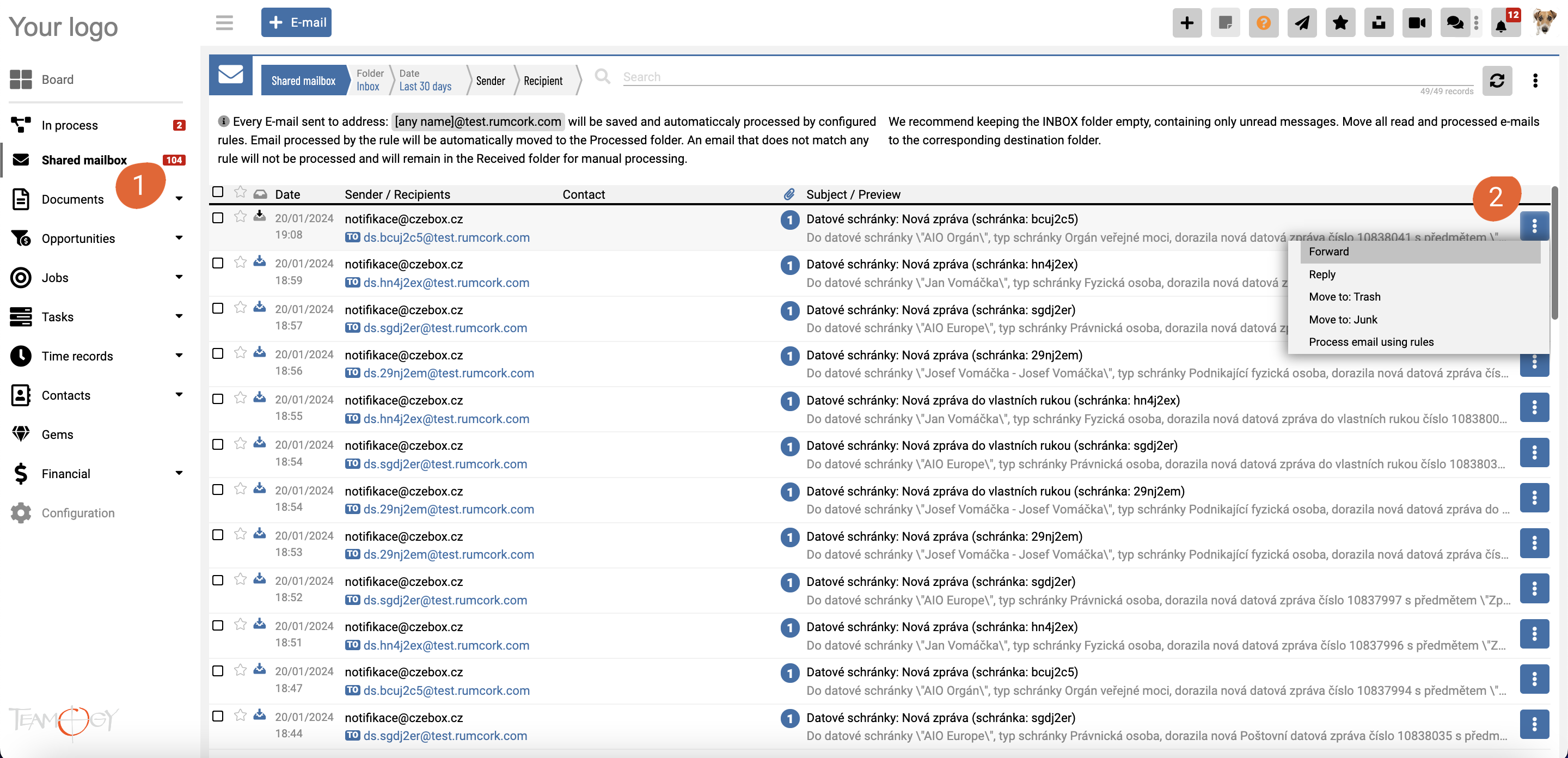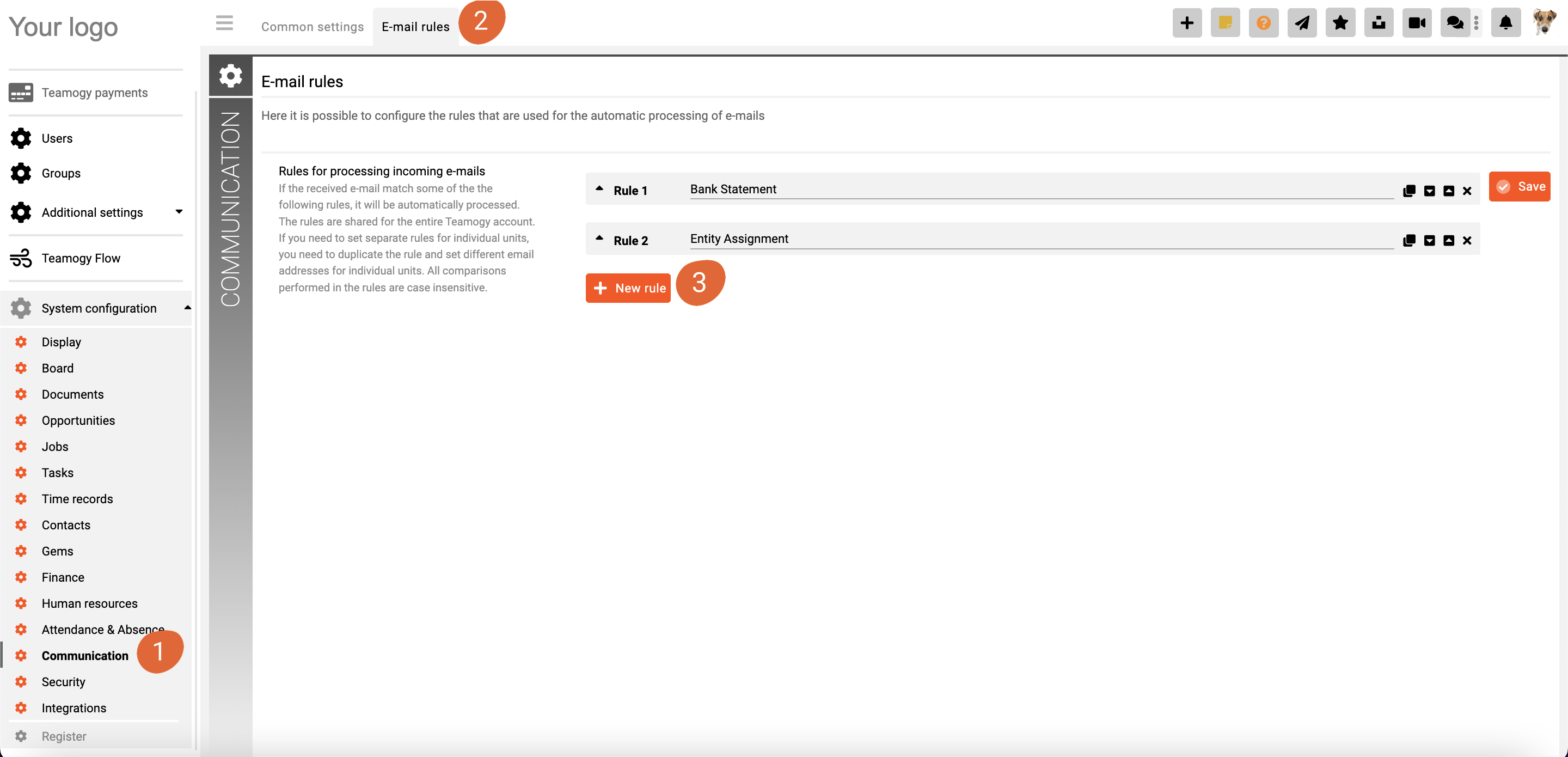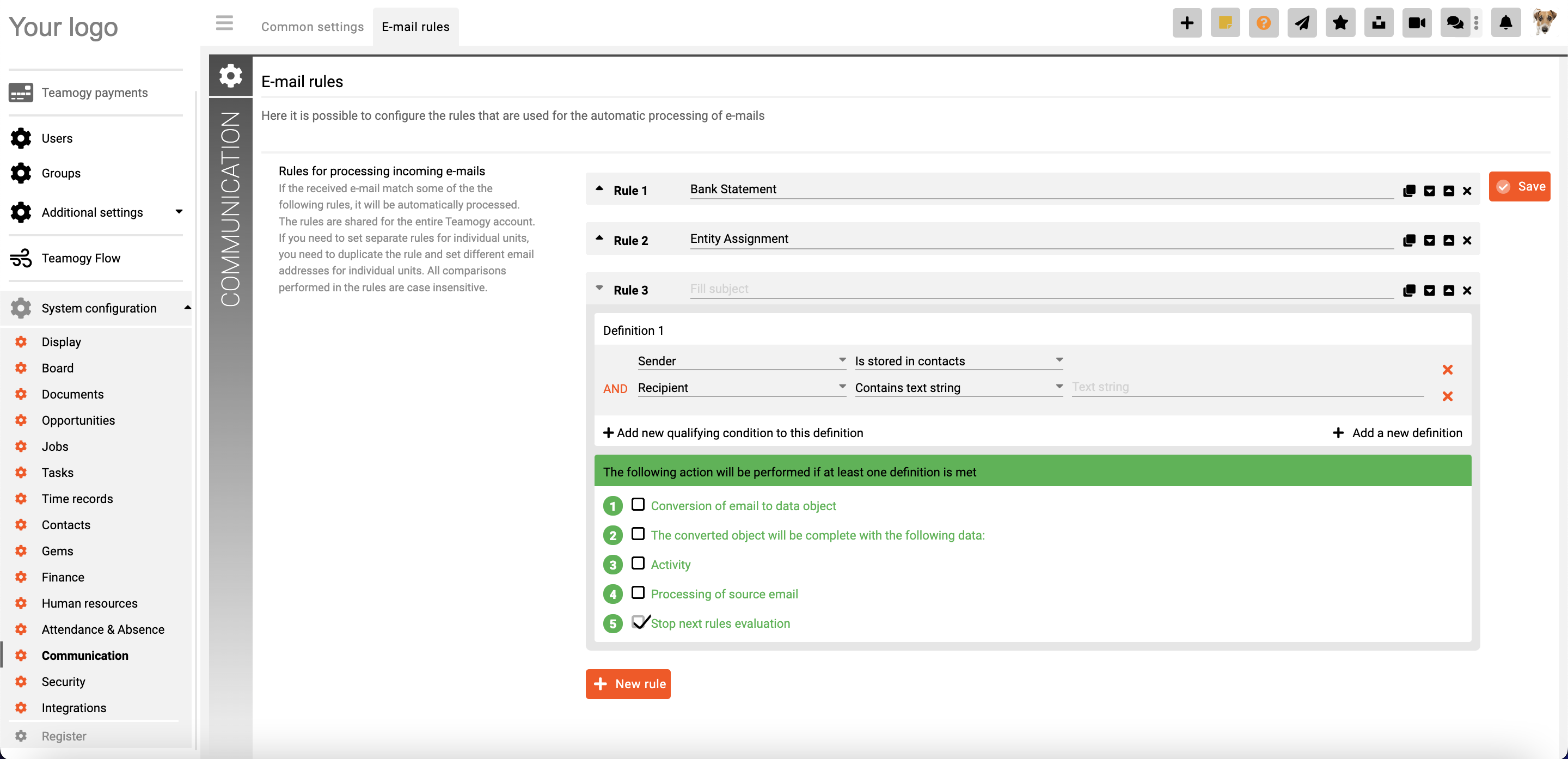E-mails In Teamogy
We bring you the possibility to record e-mail communications directly in Teamogy. You can have your e-mails connected directly to tasks, documents, invoices, etc… You can also set your own rules to proceed them.
1. Receiving e-mails and processing them according to the rules
Receiving e-mails
- E-mails addressed to [xxxxxx]@[subdomain].[maindomain] will automatically arrive in the account’s shared mailbox. This mailbox is shared across all account units, and processing for individual units can be controlled by the rules.
Shared mailbox
- A shared mailbox is available to handle incoming e-mails that have not been processed according to the rules set.
- In the shared mailbox, the authorized user can process, move to the folder, reply, forward e-mails.
- To view received e-mail in modal allows to simply add the sender’s e-mail to the contacts of the company or to the blacklist.
- Permissions to access the shared mailbox are given to the group by default: „Finance”, „Finance supervisor”, „Supervisor”, „Mailbox browser”.
2. E-mails processing
Automatically process received e-mails using rules
- Each e-mail, after being delivered to the shared mailbox, is assigned to the company/person whose e-mail is in the address book.
- Then it is processed by a set of rules. Each e-mail is sequentially tested with the configured rules and if it passes the condition in the rule, it is processed according to that rule.
Lists of e-mail addresses
- In the configuration (..Additional settings/E-mail lists) (1) there is a tool for registering mail addresses and adding them to lists
blacklist, whitelist, registered, unsubscribed.. etc. - The inclusion (2) of an e-mail address on a given list can be used in the rules for processing e-mails
e.g. an e-mail from a sender on the blacklist can be automatically added to the spam list.
3. E-mails sending
Improved e-mail sending
- Outgoing e-mail receives the CC address of the source entity (the reply from the recipient is then automatically assigned to the entity).
- Other relevant e-mail addresses can be easily added.
- Outgoing e-mail is automatically saved and associated with the entity.
- Notification e-mails have a sending address according to the source notification (possibility to set rules within the user’s mailbox).
Assigning e-mails to entities
- Each document (and job, task, etc.) has its own e-mail address. (1)
- The address is – [module].[unitId].[number]@[subdomain].[maindomain].
- A new tab „Assigned e-mails” has been created on each entity, which shows the e-mails assigned to the document. (2)
- Sending an e-mail to this address means, it is automatically assigned to the entity (if the rule is enabled). (3)
Sending e-mails from your own domain
- It is now possible to set that e-mails outgoing from Teamogy should not go from the general address [xxxxxx]@[subdomain].[maindomain] but from the client’s own domain and the address of the specific user [FirstName.LastName]@[client.com] as the user has set in his/her user profile
- This is treated as an extra service and requires the following settings:
1 – the client requests to be put into service on his own domain client.com
2 – support Teamogy generates a DKIM key for this domain and sends instructions to the client
3 – the client configures the DNS of his domain according to the sent instructions, thus authorizing Teamogy to send from his domain
4 – then Teamogy support reconfigures the settings so that e-mails go out with the client.com domain
Skontaktuj się z nami
Jeśli nadal masz jakiekolwiek pytania lub potrzebujesz dalszej pomocy, skontaktuj się z pomocą techniczną Teamogy. Możesz korzystać z czatu online (wewnątrz Teamogy lub w dowolnym miejscu www.Teamogy.com w prawym dolnym rogu) a otrzymasz szybką odpowiedź.




